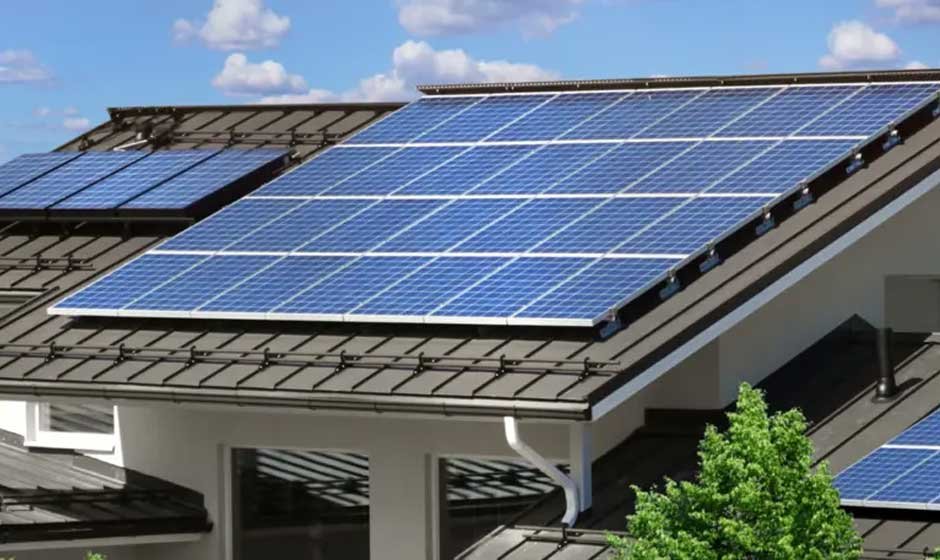Deciding to install solar panels at home is a significant step toward sustainable living and reducing electricity costs. However, not every property has the same potential for generating solar energy. Before investing, it’s essential to evaluate whether your home is suitable for solar power carefully. Various factors, including roof orientation, shading, and energy consumption patterns, impact the efficiency and benefits of solar panels. By carefully assessing these elements, homeowners can make informed decisions and maximize the benefits of solar technology. We will explore the key considerations to help you determine your home’s solar power installation potential.
Key Factors to Evaluate Your Home’s Solar Power Potential
Evaluate Your Roof’s Orientation and Angle
The direction your roof faces plays a crucial role in how much sunlight your solar panels can capture. In the Northern Hemisphere, a south-facing roof typically receives the most sunlight throughout the day, making it an ideal location for solar installations. East- and west-facing roofs can still be effective, but may produce less energy due to shorter exposure times or lower sun angles. Additionally, the pitch or angle of the roof impacts sunlight absorption. Roofs angled between 30 to 45 degrees tend to be most efficient for solar panels because they align well with the sun’s path. If your roof’s orientation or angle isn’t optimal, a solar energy company may suggest alternatives such as ground-mounted systems or adjustable racks to improve sunlight capture. Taking accurate measurements of your roof’s direction and slope helps in understanding the potential solar output.
Consider Shading From Trees, Buildings, and Other Structures
Shadows cast by nearby trees, chimneys, neighboring buildings, or other obstructions can significantly reduce the amount of sunlight reaching your solar panels. Even partial shading can disrupt the performance of solar systems, as shaded panels produce less electricity and can affect the overall output of the array. It’s important to observe your property at different times of the day and year to identify any areas where shading occurs. Consulting solar maps or using shading analysis tools can offer a detailed understanding of shadow patterns. If your home experiences frequent shading, it may require trimming trees or positioning panels in locations with maximum sunlight exposure. Addressing shading issues upfront ensures that your solar investment delivers consistent and efficient energy generation.
Assess Your Current Energy Consumption and Goals
Understanding how much electricity your household uses on a daily and monthly basis is essential when planning for solar power. Reviewing past utility bills provides insight into your energy needs, helping determine the size and capacity of the solar system required to meet your consumption. Some homeowners aim to cover 100% of their electricity usage, while others prefer to supplement their existing energy supply to reduce bills. Defining your energy goals early allows for better system design and budgeting. Additionally, considering future changes such as installing electric vehicles or adding new appliances can influence your energy demand. By aligning your solar installation with your consumption patterns, you can maximize savings and ensure your system meets long-term needs.
Examine Roof Condition and Available Space
The physical condition of your roof is a practical factor when deciding if solar installation is feasible. Panels require a stable, secure surface for mounting, so an older roof with damage or deterioration may need repairs or replacement before installation. Inspecting the roof’s materials and structure ensures it can support the weight of solar panels and mounting hardware. Furthermore, the amount of usable roof space determines how many panels can be fitted, which in turn affects the overall system size and output. Roofs with multiple sections, vents, or skylights may limit the available area for panels. Homeowners should measure and map their roof to identify the largest continuous space free from obstructions. Adequate space combined with good condition creates an optimal foundation for a solar setup.
Check Local Climate and Sunlight Availability
The climate in your region influences solar power potential, as panels generate electricity based on sunlight intensity and duration. Areas with clear, sunny weather produce more energy compared to locations with frequent cloud cover or heavy rainfall. However, solar technology has advanced to function efficiently even in less-than-ideal conditions. It’s helpful to research the average solar radiation levels in your area to estimate the annual energy production of your system. Local weather data and solar maps provide useful information for this assessment. Considering seasonal variations also helps anticipate fluctuations in solar output throughout the year. While climate impacts performance, many homes in various environments benefit from solar power when systems are properly designed and installed.
Consult with Solar Providers for an On-Site Evaluation
While initial assessments can be done independently, inviting solar providers to conduct an on-site evaluation offers valuable insights tailored to your property. Professionals can perform detailed measurements, shading analyses, and roof inspections to provide accurate estimates of system size, potential energy production, and costs. This hands-on approach helps identify any challenges or opportunities unique to your home. Most solar companies offer free consultations and utilize advanced tools, such as drones or software modeling, to optimize system design. Collaborating with providers at this stage allows for informed decision-making and confidence in your solar power investment.
Assessing your home’s solar power installation potential involves a thoughtful review of several factors that influence the success and efficiency of a solar system. By examining your roof’s orientation and condition, shading patterns, energy needs, local climate, regulations, and incentives, you create a clear picture of what to expect from solar energy at your property. Taking these steps enables you to make informed decisions that align with your environmental and financial goals. With careful evaluation and planning, transitioning to solar power can become a rewarding and sustainable choice that benefits both your household and the planet.










